After missing the playoffs for seven straight years, the Knicks had a surprising turnaround during the 2020/21 season under new head coach Tom Thibodeau, finishing with a 41-31 record, the No. 4 seed in the East. They ultimately fell to the Hawks in the first round, but it was still a successful season, particularly given the notable contributions from Julius Randle and RJ Barrett.
Randle was an All-Star for the first time, earned a berth on the All-NBA Second Team, and was voted Most Improved Player after averaging 24.1 PPG, 10.2 RPG and 6.0 APG on .456/.411/.811 shooting (.567 true shooting percentage). Barrett improved his numbers across the board, and his .441/.401/.746 (.535 true) shooting line was very encouraging for a player who had question marks about his jump shot.
New York had the NBA’s third-ranked defense in ’20/21, and its net rating was +2.4, ninth in the league. The team’s expected win total precisely matched its actual total, per Basketball-Reference.
Unfortunately, the Knicks had a disappointing follow-up season in ’21/22, finishing with a 37-45 record, the No. 11 seed in the East. Randle fell back to earth a bit and had several strange incidents both on and off the court, posting a disappointing .411/.308/.756 (.509 true) shooting line and lacking the same effort level defensively. Similarly, although his scoring average improved, Barrett’s efficiency got worse, posting a .408/.342/.714 (.511 true) shooting line.
The team’s offensive rating was nearly identical between the two seasons (110.6 vs. 110.4, both below average), but the defense fell to 11th in the league, with a -0.1 net rating. The Knicks’ actual win total was four less than expected, but even if they had won four more games, they still would’ve likely missed the play-in tournament (Atlanta and Charlotte both finished with 43 wins).
The Knicks’ front office recognized that they needed to make some changes and have had a busy offseason, trading away the No. 11 pick (Ousmane Dieng) to the Thunder to acquire three 2023 protected first-round picks, then flipping one (the Nuggets’ lottery-protected pick) and four second-rounders to the Hornets for the draft rights to No. 13 pick Jalen Duren.
New York then packaged Duren with Kemba Walker, receiving the Bucks’ 2025 top-four protected first-rounder from the Pistons in the deal. The Knicks also made a separate trade with Detroit, a salary dump move that sent Alec Burks, Nerlens Noel, a second-rounder and $6MM in cash in exchange for a heavily-protected second-rounder.
All of those moves gave the Knicks the cap room to sign free agent guard Jalen Brunson to a four-year, $104MM deal. They also signed center Isaiah Hartenstein to a two-year, $16MM deal and re-signed center Mitchell Robinson to a four-year, $60MM contract.
Obviously, they were heavily involved in trade rumors for three-time All-Star Donovan Mitchell, who landed in Cleveland, but ultimately didn’t make the deal and I’m not going to get into that much since it’s been written about ad nauseam.
Even though the Knicks have had an active summer, former Knicks head coach and current ESPN broadcaster Jeff Van Gundy doesn’t think the team has moved the needle much with its roster moves, per Marc Berman of The New York Post.
“The Knicks have good players, but you line it up against the competition in the East, and this roster is not on the same level,” Van Gundy told Berman in a phone interview. “They could shock the world and be a playoff team, but I look at the East and I’d have to say eight to 13 is where they should be predicted. They’re not even close to a lock for the play-in. A lot has to go right.”
According to Van Gundy, the Knicks lack the top-end talent to be considered a real threat. He suggests that a turnaround and play-in berth might hinge upon a bounce-back season from Randle.
That leads us to our question of the day. Do you agree with Van Gundy’s assessment that “a lot has to go right” for the Knicks to make the play-in tournament? Head to the comments section and let us know what you think.
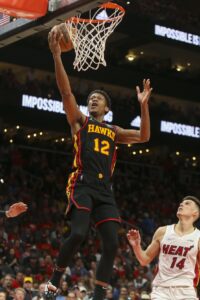 Hunter clearly worked hard on his game entering year two, as he got off to a great start, averaging 17.9 PPG and 5.6 RPG on a stellar .517/.375/.877 (.646 true) shooting line in 17 games (33.3 MPG). Unfortunately, things went downhill from there, as right knee discomfort and swelling ultimately led to arthroscopic surgery and multiple setbacks, causing Hunter to miss all but five games the rest of the regular season.
Hunter clearly worked hard on his game entering year two, as he got off to a great start, averaging 17.9 PPG and 5.6 RPG on a stellar .517/.375/.877 (.646 true) shooting line in 17 games (33.3 MPG). Unfortunately, things went downhill from there, as right knee discomfort and swelling ultimately led to arthroscopic surgery and multiple setbacks, causing Hunter to miss all but five games the rest of the regular season.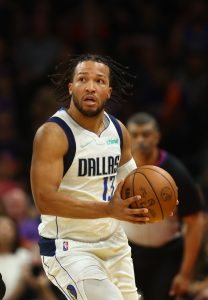 For the most part, a free agent who signed a contract in the offseason is ineligible to be traded until December 15.
For the most part, a free agent who signed a contract in the offseason is ineligible to be traded until December 15.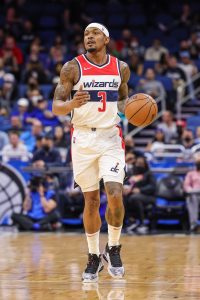 Wizards star
Wizards star 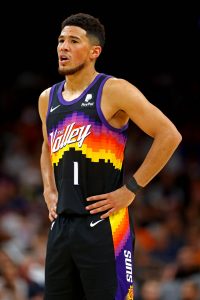 A
A 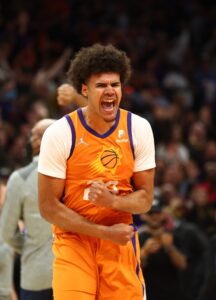 Part of the reason Johnson was rated lower than where he was drafted was that he was an older prospect. After receiving a redshirt for his freshman year, he wound up playing a full four years afterward – he spent his first few college seasons with Pittsburgh before transferring to North Carolina.
Part of the reason Johnson was rated lower than where he was drafted was that he was an older prospect. After receiving a redshirt for his freshman year, he wound up playing a full four years afterward – he spent his first few college seasons with Pittsburgh before transferring to North Carolina.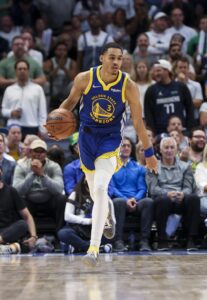 Things weren’t much better for Poole during the first few months of his second season in 2020/21, appearing in just 15 of Golden State’s first 36 games and receiving scant playing time (9.6 MPG). Since he wasn’t getting much NBA run, he was sent to the G League in February 2021 to work on his craft.
Things weren’t much better for Poole during the first few months of his second season in 2020/21, appearing in just 15 of Golden State’s first 36 games and receiving scant playing time (9.6 MPG). Since he wasn’t getting much NBA run, he was sent to the G League in February 2021 to work on his craft.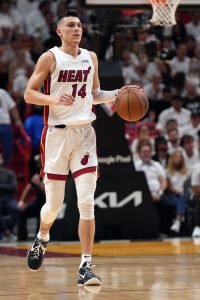 His primary skill is that he’s an excellent shooter from all over the court, ranking in the 63rd percentile from mid-range, 87th on threes, and 87th from the free throw line, per
His primary skill is that he’s an excellent shooter from all over the court, ranking in the 63rd percentile from mid-range, 87th on threes, and 87th from the free throw line, per